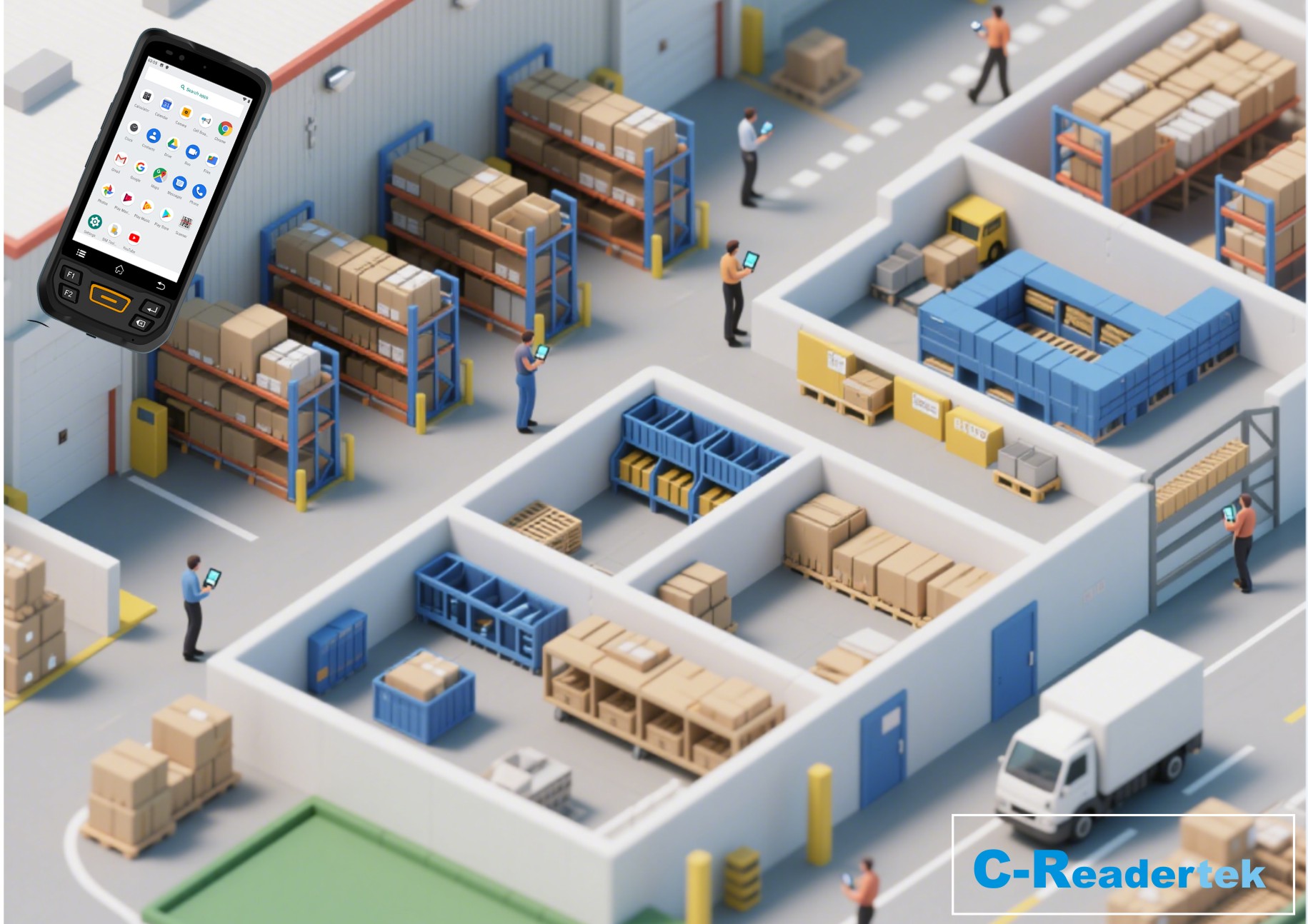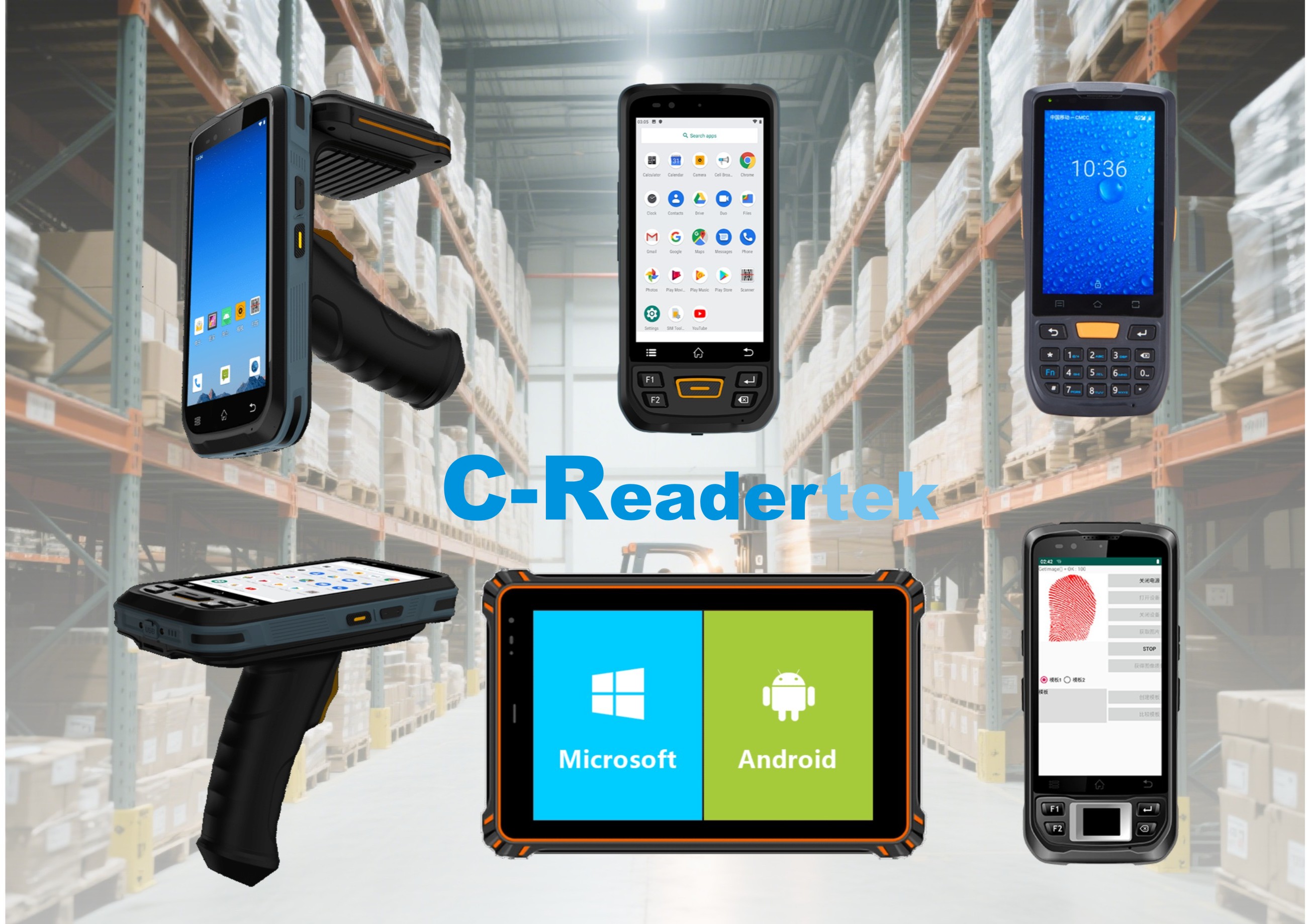Development and application of handheld terminal technology
1. Overview of Handheld Terminal Technology
Handheld Terminal is a portable intelligent device that integrates data collection, processing and transmission functions. It has become one of the core tools for the digital transformation of modern enterprises. As an important carrier of mobile computing technology, handheld terminals integrate three core technologies: automatic identification, wireless communication and mobile computing, and show unique value in improving operational efficiency and optimizing work processes.
From the perspective of technical composition, modern handheld terminals usually include the following core modules:
Hardware system: including computing components such as processors, memory, storage, and data acquisition components such as cameras, scanning engines, and RFID readers
Operating system: Android is the mainstream, and some industrial scenarios still use systems such as Windows IoT
Communication module: supports multiple wireless communication protocols such as 4G/5G, Wi-Fi 6, and Bluetooth 5.0
Human-computer interaction interface: multi-mode design such as touch screen, physical buttons, and voice interaction
As an advanced form of handheld terminals, mobile computers integrate more powerful computing power and richer functional modules. Modern industrial-grade mobile computers not only have the data collection function of traditional handheld terminals, but also can run complex business applications and support real-time data analysis and decision-making.
According to the latest data from VDC Research, the global handheld terminal market will reach $5.8 billion in 2023, of which products with integrated handheld RFID functions account for more than 40%. It is estimated that by 2028, the market size of mobile computer products supporting RFID reading will exceed $10 billion, with an annual compound growth rate of about 11.5%. This growth is mainly driven by three aspects: first, the acceleration of digital transformation in the retail industry, second, the surge in demand for intelligent transformation in the manufacturing industry, and third, the strong demand for efficiency improvement in the logistics industry.

2. Technological evolution of handheld terminals
(I) Review of development history
The technological evolution of handheld terminals can be divided into four key stages:
The first stage (1990-2000): the period of single function
Early equipment is represented by Symbol Technologies' PTT series, which is mainly equipped with barcode scanning function and uses a proprietary operating system. The equipment weight generally exceeds 1 kg and the battery life is only 3-4 hours. The products in this stage are mainly used in warehousing and logistics fields, and the functions are relatively single.
The second stage (2001-2010): Technical standardization stage
With the popularity of Windows CE system, the MC series launched by Motorola (now Honeywell) has become an industry benchmark. The device began to support handheld RFID reading, the protection level was upgraded to IP54, and the battery life was extended to 8 hours. The important breakthrough during this period was the widespread application of the EPC Gen2 standard in 2006, which solved the compatibility problem between different devices.
The third stage (2011-2020): Intelligent transformation period
The introduction of the Android system has completely changed the application ecology of handheld terminals. The new generation of products represented by Honeywell's CT series integrates edge computing capabilities, supports multi-mode data collection (RFID+barcode+image), and has cloud data synchronization functions. Industrial design has also made significant progress, with the weight reduced to about 600g and the protection level generally reaching IP65.
The fourth stage (2021 to present): Fusion and innovation period
Currently, mobile computer-type handheld terminals are showing three major development trends: one is the full support of 5G technology, the second is the integration of AI acceleration chips, and the third is the integration of AR/VR functions. Honeywell's latest CT60 series is equipped with Qualcomm QCS6490 processor, with AI computing power of 15TOPS, supporting real-time object recognition and analysis, and powerful handheld RFID reading capabilities.
(II) Core technology breakthroughs
The technological innovation of modern mobile computer-type handheld terminals is mainly reflected in four aspects:
1. Processor performance leap
Mainstream devices have upgraded from single-core ARM processors to eight-core/ten-core architectures, with computing power increased by more than 20 times. Taking the Snapdragon 660 used in Honeywell CT40 as an example, its performance is close to that of mid-range smartphones, and it can smoothly run complex business applications while processing handheld RFID data collection tasks.
2. Data collection technology innovation
The new generation of handheld RFID scanning engines can read at a speed of up to 1,000 times/second, and the UHF band reading distance exceeds 12 meters, while supporting batch reading of 300+ tags. In addition, the introduction of computer vision technology has enabled mobile computers to have the ability to associate image recognition with RFID data.
3. Comprehensive improvement in communication capabilities
Supports 5G SA/NSA dual-mode, Wi-Fi 6 and Bluetooth 5.2, with a theoretical transmission rate 10 times higher than 4G. Datalogic's Skorpio X5 also innovatively uses MIMO antenna technology, which greatly improves the quality of handheld RFID signal reception, especially suitable for high-density tag environments.
4. Optimized human-computer interaction experience
The 6-inch full HD touch screen has become standard for mobile computers, and some models support glove and wet hand operation. The introduction of voice interaction function has increased the efficiency of handheld RFID operation by more than 40%, and the AR visualization interface has greatly reduced the difficulty of tag positioning in complex environments.
III. Industry Application Practice
(I) Innovative Applications in the Retail Industry
1. Intelligent Inventory Management
A global retail giant has achieved a revolutionary change in inventory management by deploying 15,000 mobile computers with integrated handheld RFID functions:
Store inventory time reduced from 72 hours to 4 hours
Inventory accuracy increased from 85% to 99.5%
Out-of-stock rate reduced by 60%, and annual revenue increased by more than US$50 million
2. Omni-channel retail support
After equipping store employees with mobile computers, large electronic retailers have achieved:
Real-time query of online and offline inventory status
Quickly locate products through handheld RFID
Customer waiting time reduced by 65%
(II) Logistics and warehousing efficiency revolution
1. Intelligent sorting system
After an international logistics giant deployed a handheld RFID solution in the Asia-Pacific hub:
Sorting efficiency increased by 300%
Error rate reduced to less than 0.05%
Employee training cycle shortened by 50%
2. Cold chain logistics monitoring
The leading express delivery company's pharmaceutical cold chain project integrates temperature sensing mobile computers:
Real-time monitoring of drug transportation environment
Handheld RFID automatically records temperature control data
Automatic generation of compliance reports
(III) Digital transformation of manufacturing industry
1. Production traceability system
A well-known automobile manufacturer's factory deploys 500 mobile computers:
Full-process traceability of parts through handheld RFID
Response speed to quality issues increased by 80%
Document electronicization rate achieved 100%
2. Tool asset management
The practice of aviation manufacturing companies shows that:
3000+ tools are digitally managed with handheld RFID
Tool search time reduced from 20 minutes to 2 minutes
Annual loss cost reduced by US$1.2 million
IV. Technical challenges and solutions
(I) Adaptability to the use environment
1. Extreme temperature response
Honeywell solves the challenges of working environment from -30℃ to 50℃ through the following innovations:
Use wide-temperature lithium batteries to ensure the battery life of mobile computers
Optimize heat dissipation design to ensure the stability of handheld RFID modules
Develop a special touch screen for low temperatures
2. Dustproof and waterproof design
Mainstream industrial mobile computers achieve IP67 protection level through the following measures:
Fully sealed structure protects handheld RFID components
Nano hydrophobic coating
Air pressure balance valve
(II) Data security protection
1. Transmission security encryption
Adopt AES-256 hardware encryption and national secret SM4 algorithm for double insurance:
Handheld RFID data encryption performance increased by 5 times
Power consumption increased by only 8%
Passed FIPS 140-2 certification
2. Privacy compliance management
GDPR compliance solutions include:
Mobile computer data anonymization processing
Handheld RFID permission fine control
Operation log audit
V. Future development trends
(I) Hardware technology evolution direction
1. Flexible electronic applications
Foldable screen mobile computer prototype has been released
Curved circuit design improves handheld RFID antenna performance by 30%
Expected to be commercialized in 2025
2. Sustainable design
The proportion of bio-based materials increased to 40%
Modular design reduces the maintenance cost of mobile computers by 60%
Energy recovery efficiency reaches 15%
(II) Software function innovation
1. Digital twin integration
Real-time synchronization of physical and digital status of mobile computers
Handheld RFID data drives predictive maintenance (accuracy reaches 90%)
Virtual commissioning shortens deployment cycle
2. AI Enhanced Functions
Mobile Computer Smart Shelf Monitoring
Handheld RFID Automatic Anomaly Detection
Predictive Replenishment Recommendations
VI. Conclusions and Recommendations
(I) Summary of Application Value
Mobile computers and handheld RFID technology have proven their unique value in the following aspects:
Improved operational efficiency: an average increase of 3-5 times in operating efficiency
Improved data quality: the error rate is reduced to 1/10 of traditional methods
Enhanced decision support: real-time data supports accurate decision-making
(II) Development Recommendations
Recommendations for enterprise users:
Clearly define demand positioning: select appropriate mobile computer configuration according to business scenarios
Pay attention to system integration: ensure that handheld RFID is seamlessly connected with the company's existing systems
Strengthen personnel training: establish a complete mobile computer operation training system
Recommendations for technology suppliers:
Deepen industry applications: develop vertical industry handheld RFID solutions
Strengthen ecological construction: build an open mobile computer developer community
Innovative business models: explore new models such as device as a service (DaaS)
With the maturity of 5G-A and 6G technologies, mobile computers will evolve towards "intelligent sensing terminals" and play a more important role in emerging fields such as industrial metaverse and digital twins. Handheld RFID technology will also be further integrated with AI and edge computing to provide more powerful technical support for the digital transformation of enterprises. Enterprises should grasp the pulse of technological development, deepen digital transformation through mobile computers and handheld RFID applications, and build a competitive advantage for the future.
 NFC Technology: Ushering in a
NFC Technology: Ushering in a
 How to choose a suitable handh
How to choose a suitable handh
 Five core applications of hand
Five core applications of hand
 Handheld Mobile Computer - Chi
Handheld Mobile Computer - Chi